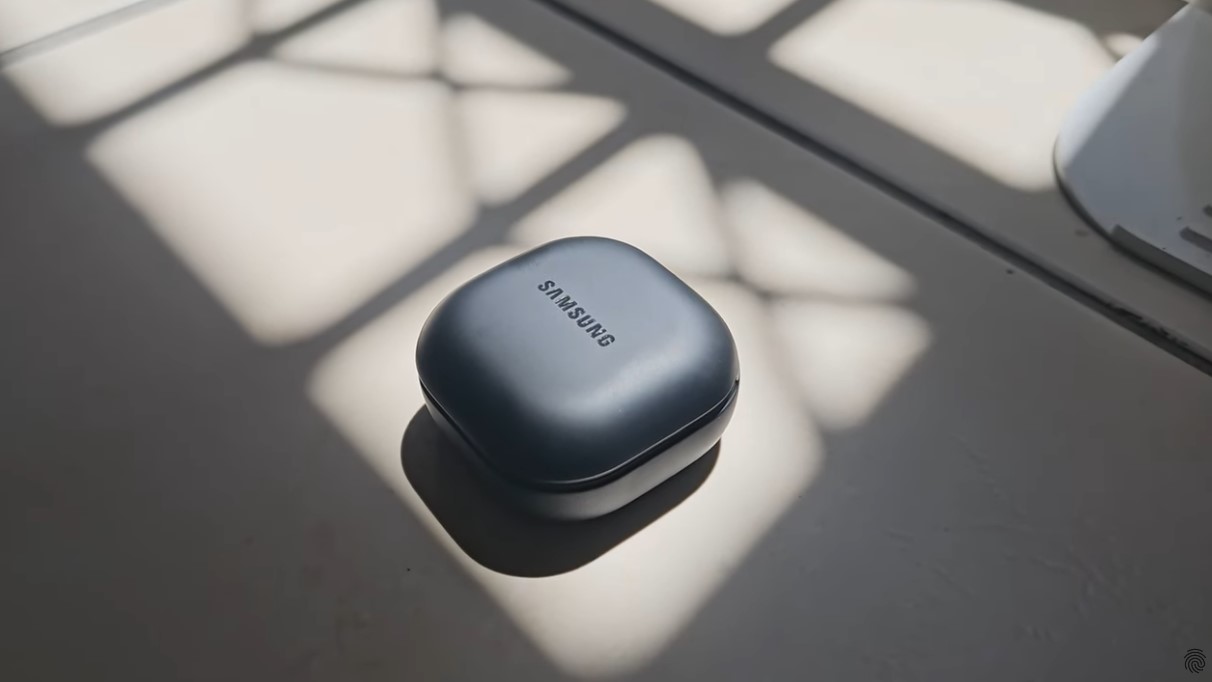Visual excerpt from the YouTube channel Galaxy Unlocked. All rights belong to the original creator.
In a groundbreaking development for wearable technology, a recent leak reveals that Samsung is working on integrating real-time translation capabilities into its upcoming Galaxy Buds. This feature, expected to leverage advanced artificial intelligence (AI), aims to enhance communication for users in multilingual environments and on-the-go travelers.
The leaked patent details an innovative system where the Galaxy Buds, equipped with both a microphone and speaker, could detect, process, and translate speech from various languages. The translation process would reportedly be supported by a smartphone app, providing an interface for users to select their preferred languages and view translations on-screen. Notably, the system would likely require an internet connection for real-time translations, although there is mention of offline functionality for common phrases and words. This could be achieved through local storage, where the earbuds may cache frequently used terms, enabling limited offline translation.
The Galaxy Buds’ anticipated translation abilities align with other reports of Samsung’s AI developments, particularly around the upcoming S24 chipset. This new processor is rumored to support advanced AI functions directly on the device, reducing dependence on cloud-based processing and enabling faster, more secure translations. Samsung’s approach is part of a larger trend in the technology industry to embed AI within devices themselves. This shift toward localized AI processing promises more responsive and personalized user experiences, particularly in language translation.
Details on how Samsung’s real-time translation feature will function remain speculative. The patent suggests that the Galaxy Buds could operate through an app on a connected Samsung device, such as a Galaxy smartphone. In this scenario, the app could handle translation processing and relay the results to the earbuds, enabling quick and accurate translations directly in the user’s ear. Alternatively, if Samsung equips the Galaxy Buds with an internal neural processing unit (NPU), it could allow for onboard translation without relying solely on the connected phone. This would be a significant step in advancing Samsung’s wearable tech capabilities, though the complexity of such technology may mean that fully independent, real-time translation within the earbuds could be a feature for future generations.
Samsung’s exploration of real-time translation for its Galaxy Buds is ambitious, but it isn’t entirely without precedent. Google’s Pixel Buds, for instance, already offer a similar translation feature powered by Google Translate, supporting around 40 languages. However, Samsung’s approach seems to go beyond a simple translation tool. The patent indicates that Samsung’s earbuds may include advanced AI capable of learning from user speech patterns, tailoring translations based on commonly used phrases or preferences, and producing more natural, accurate translations over time. This user-centric approach could differentiate Samsung’s offering from competitors by enhancing both the accuracy and personalization of real-time translations.
The prospect of AI-powered translation in the Galaxy Buds has stirred significant interest in the tech community. However, it’s essential to remember that patents are not guarantees. Many patented technologies never reach production, as the process of refining complex, cutting-edge features like real-time AI translation can be challenging. That said, if Samsung successfully brings this concept to life, it could provide a valuable edge in the competitive market for wireless earbuds, especially as translation technology becomes a sought-after feature in wearable tech.
For Samsung, real-time translation could broaden the appeal of its Galaxy Buds, making them especially valuable for travelers, multilingual users, and professionals who frequently interact across language barriers. This addition would showcase Samsung’s commitment to enhancing the utility of its wearable products, potentially positioning the Galaxy Buds as not just an audio device but as an essential tool for global communication.
Moreover, integrating AI translation into earbuds speaks to the broader evolution of wearables from simple, single-purpose devices into versatile, AI-powered tools. By integrating language processing capabilities, Samsung’s Galaxy Buds may contribute to a future where users rely on their wearables for an array of real-time interactions, from language translation to context-specific information and personalized experiences.
The potential impact of Samsung’s efforts goes beyond the consumer market, highlighting how AI can transform wearables into tools that respond dynamically to users’ linguistic needs. In professional and social settings alike, real-time translation could offer smoother communication, minimizing language barriers and fostering inclusivity. Imagine stepping off a plane in a foreign country and instantly understanding the local language, or attending a meeting where language differences are no longer an obstacle. These scenarios represent just a few of the transformative possibilities that AI-powered wearables like the Galaxy Buds could unlock.
As Samsung prepares to unveil its next generation of Galaxy Buds, expected in 2024, the tech industry is watching closely. If real-time translation is indeed a feature, it will set a new benchmark in wearable technology and reinforce Samsung’s reputation as an innovator in the AI and consumer electronics space. Competitors will likely follow suit, further accelerating the integration of AI in everyday devices.
For now, the details are speculative, and Samsung has not confirmed the specifics of its new Galaxy Buds. However, the concept of AI-driven translation embedded in earbuds is an exciting indicator of where wearable technology is headed. As AI capabilities continue to advance, consumers can look forward to a future where smart earbuds and other wearables play an increasingly active role in our daily lives, bridging communication gaps and enriching human interaction across diverse cultures.
Stay tuned for further updates as Samsung’s plans for its Galaxy Buds evolve, potentially marking a significant leap forward in wearable technology and AI-driven language solutions. Whether Samsung’s patent becomes a reality or not, the idea underscores a powerful vision for the future: one where technology brings us closer together by transcending the boundaries of language.



















